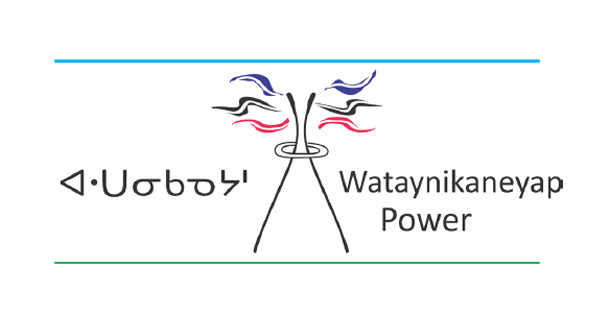

PIKANGIKUM – BUSINESS –Minister of Indigenous and Northern Affairs Canada (INAC) Carolyn Bennett, says today’s funding commitment means that Pikangikum First Nation can now look forward to clean, reliable and accessible power – something the community has been lacking for decades.
“The connection of Pikangikum First Nation to the Ontario electrical grid will mark a significant achievement,” says Minister Bennett. “Together, First Nation, federal and provincial partners are making progress in creating lasting improvements to the quality of life in Pikangikum First Nation, improving health and safety, and opening the door for future economic development.”
Like so many remote First Nations communities in Northwestern Ontario, Pikangikum has relied on diesel to power its community. Without access to reliable power, everything from education, health services, to safe drinking water and the ability to connect new homes and build other critical infrastructure has been hampered. Over 80% of existing homes are without water and sewer service. The fuel-intensive diesel generating station has been operating at capacity since 2010, leaving the community to struggle with constant power outages and several catastrophic generator failures.
“This is the best news I’ve heard in a long time – the community really needs this,” says Chief Dean Owen. “I would like to thank Minister Bennett for her support to the community. Now we need to get the line in as soon as possible. This means that Pikangikum can move forward with infrastructure, economic development and community growth. And now that Wataynikaneyap Power has achieved this success, we can focus on the rest of the remote First Nation communities being connected.”
The decision to fund the Pikangikum Power Line Project on an expedited basis now lends momentum to the larger Wataynikaneyap Transmission Project – a transformational project that promises to be one of the most significant infrastructure projects in Ontario’s history.
“Investing upwards of $60 million to bring reliable energy to Pikangikum will enhance sustainable socio-economic initiatives that the community have been struggling to develop for many years,” says Margaret Kenequanash, CEO for Wataynikaneyap Power. “It will help build and improve community development, infrastructure and housing that will provide stability in Pikangikum. I am thinking about the children, the Elders and the overall community and on what this means to them. I am excited and welcome this commitment from both levels of government.”
“Today’s announcement is a major step forward for the Pikangikum Power Line Project and moves it from the development to the construction stage,” says Scott Hawkes, President and CEO of FortisOntario Inc. and Wataynikaneyap Power PM. “As Project Manager we are pleased for the Pikangikum First Nation community members, as this funding shows the commitment by the Federal government on making this line become a reality.”
Bob Nault, Member of Parliament for the Kenora Riding, welcomes today’s announcement of $60 million in funding for Wataynikaneyap Power to build a 117-kilometre grid line from Red Lake to Pikangikum First Nation.
“This is a historic time for the residents of Pikangikum First Nation to see this project finally begin as it will do more than just provide reliable electricity to the community,” stated Nault. “It will reduce reliance on diesel, open up new economic development opportunities, and facilitate social infrastructure and programming for things like affordable housing, early learning, childcare, and community health care facilities.”
Nishnawbe Aski Nation (NAN) Grand Chief Alvin Fiddler, on behalf of the Executive Council, applauds federal funding announced today for Wataynikaneyap Power (Watay) to build a grid line that will connect Pikangikum First Nation to the provincial electricity grid, “This is a tremendous achievement and I congratulate Chief Dean Owen and Wataynikaneyap Power for their efforts to bring a reliable supply of power to Pikangikum First Nation. Many of our First Nation communities still rely on diesel generation for electricity, and Watay Power is designed to significantly reduce the financial burden for First Nations while eliminating the health, safety and environmental impacts associated with diesel. This is a significant step to help Pikangikum advance their community plan for growth and development. We look to our federal Treaty partner to continue with infrastructure investments that will improve health and social conditions including housing, fire prevention services, and access to clean drinking water.”
Construction on the grid line will begin in fall 2017, with completion expected in fall 2018. Once complete, Pikangikum will be connected to the Ontario provincial electrical grid and will receive safe and reliable power.
“When I visit Pikangikum First Nation I hear about how critical this grid connection is to them. This will greatly benefit the community for generations to come,” added Nault.
This project is the result of long-term collaboration with the Government of Ontario to advance electrification of First Nation communities in Northern Ontario. It is a significant first step in eliminating Pikangikum’s dependence on diesel fuel by supporting a transition to more sustainable energy solutions.
“This announcement is long overdue, and once completed, the grid line will have a significant impact on the entire well-being of the community, as it means they will have the capacity to move ahead with other community development projects,” concluded Nault.
Connecting remote First Nations in Northwestern Ontario to the provincial electricity grid would save six megatons of greenhouse gas emissions over the next 40 years. In many communities, diesel generators are at capacity, limiting the potential to accommodate growing populations, businesses and other necessary infrastructure.
Quick Facts
- Pikangikum First Nation currently uses a diesel generating station to supply electricity. This station is operated by Pikangikum as an Independent Power Authority. It is about 38 years old and has long surpassed its life expectancy as a critical infrastructure asset.
- Wataynikaneyap Power is a licenced transmission company, equally owned by 22 First Nation Communities (51%), who partnered with an experienced industry leader, Fortis (49%), with the goal of connecting 17 of its signatories, including Pikangikum First Nation, to the provincial grid in Northwestern Ontario
Associated Links





